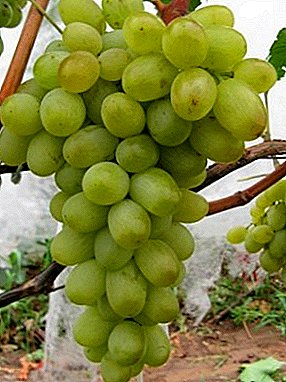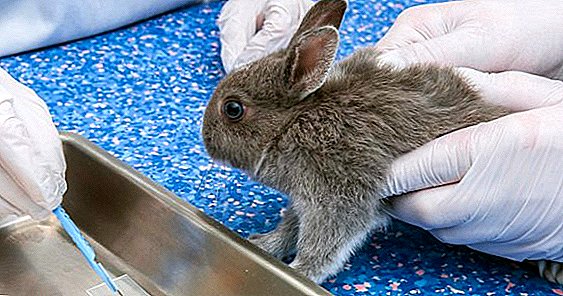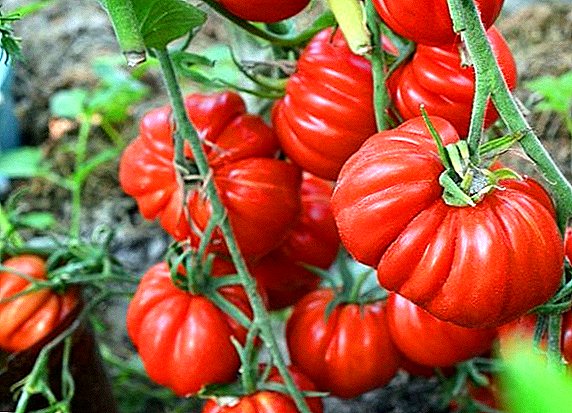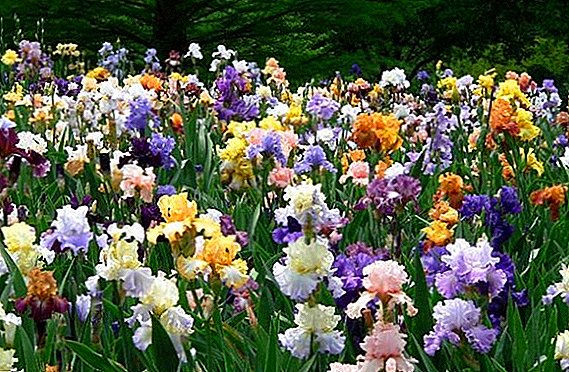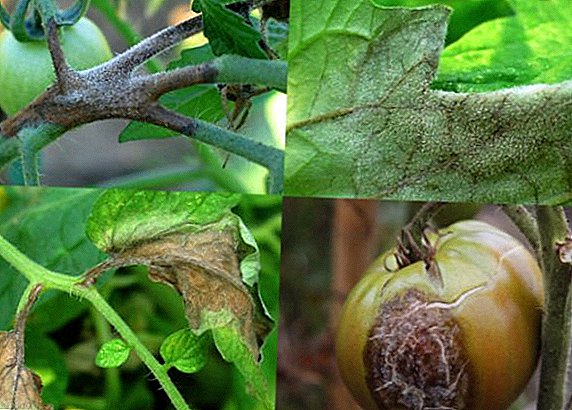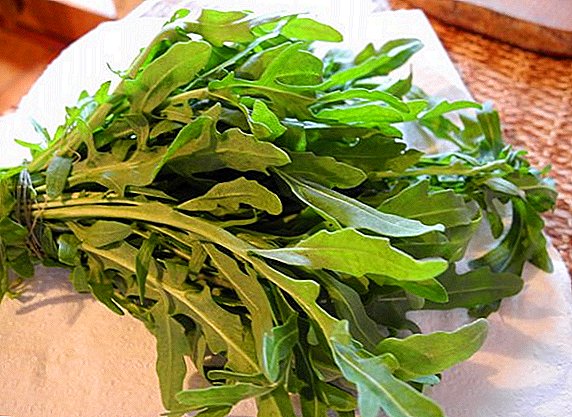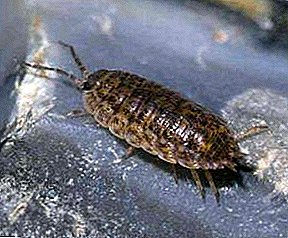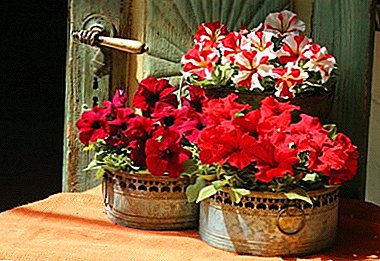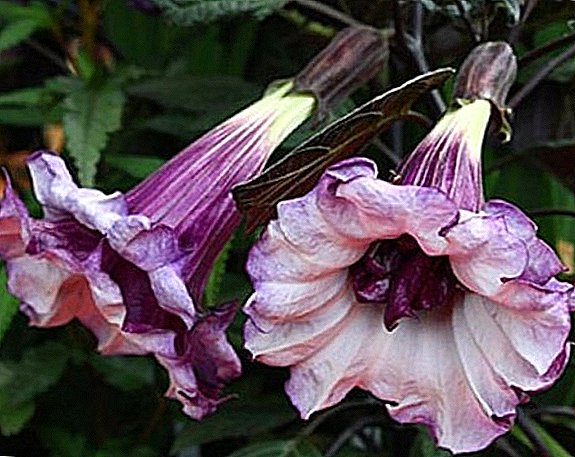 Datura or Datura-Herb - An unusual and beautiful flower, which is often found in street flowerbeds and garden plots. Datura is completely unpretentious, its planting and care are based on simple knowledge, therefore, if desired, the flower can be easily grown independently, as evidenced by numerous photos of flower growers. The fascinating scent, which is exuded in summer evenings by large white flowers, sometimes with purple splashes of datura flowers, leaves no indifferent gardener. Many people know this plant as poisonous and harmful, but it also has healing properties.
Datura or Datura-Herb - An unusual and beautiful flower, which is often found in street flowerbeds and garden plots. Datura is completely unpretentious, its planting and care are based on simple knowledge, therefore, if desired, the flower can be easily grown independently, as evidenced by numerous photos of flower growers. The fascinating scent, which is exuded in summer evenings by large white flowers, sometimes with purple splashes of datura flowers, leaves no indifferent gardener. Many people know this plant as poisonous and harmful, but it also has healing properties.
Did you know? Datura-grass or datur is a unique plant, the mysterious and mystical properties of which are beyond description. Depending on how you use it, it can be both beneficial and harmful. Therefore, some people call him "angelic flower", others, like Carlos Castaneda in one of his novels, - "devil's flower". Datura used sorcerers and soothsayers for mystical rites. The Aztecs revered grass dope as sacred, because its hallucinogenic effect allowed the priests to communicate with otherworldly forces and deities.
Datura (dope): description of the plant
People have long known what the dope flower looks like, and it has been grown for several thousand years. With proper and metered use of the plant can be used in traditional medicine. Datura-grass is different spasmolytic, analgesic and sedative effect. On the basis of the dope they prepare drugs that fight various illnesses: asthma, neuralgia, rheumatism, stomach cancer, mastopathy, coughing episodes, etc.
 Datura belongs to the Solanaceae family and includes 13 species with different descriptions in color, aroma intensity, degree of toxicity, etc. This is an annual herb (some gardeners cultivate it as a perennial), with dark green ovoid leaves with a width of about 10 cm. Flowers are large, single. The fruit of the datura is a large chetyrehgnezdovaya box, with numerous spikes, dries upon maturation.
Datura belongs to the Solanaceae family and includes 13 species with different descriptions in color, aroma intensity, degree of toxicity, etc. This is an annual herb (some gardeners cultivate it as a perennial), with dark green ovoid leaves with a width of about 10 cm. Flowers are large, single. The fruit of the datura is a large chetyrehgnezdovaya box, with numerous spikes, dries upon maturation.
The plant almost completely contains alkaloids, in stems - about 0.16%, in roots - 0.26%, in seeds - up to 0.22%. In the tropics and subtropics, where wild-growing datur lives, this flower can reach up to 5 meters in length. At home, to achieve such growth is impossible, because it requires a lot of free space. With favorable home conditions you can grow a datur to two meters.
Important! Do not inhale the scent of datura for too long, and you should not bring bouquets of these flowers into the house. They are poisonous and can cause headaches, and in some cases hallucinations and mental disorders.However, despite the toxicity of the dope, its decorative qualities and beautiful flowering are still outweighed, so the flower is actively planted in country houses and private plots. The aroma of some species of dope is quite pleasant and helps disguise unwanted and unpleasant odors in gardens and suburban areas. In addition, the plant has an incredibly beautiful color, which can vary from white to lilac, purple, violet and even yellow.
How to plant datur in open ground: choosing a place for a plant
Unpretentious plant datur does not require special skills for growing. In order to get a beautiful plant, it is enough just to provide a dope with nutrition and moisture. 
Microclimate for Datura
It is a rather light-loving plant, therefore for its landing they pick up open, sunny places, not subject to strong gusts of wind. The plant has a rare germination of seeds (up to 95%), which germinate faster with increasing temperature. Seeds can germinate in a week or two, if the temperature rises to + 25 ... +28 ° C. Plant out in spring: in open ground in May, for seedlings - in late February - early March.
Important! Do not forget that Datura is a poisonous plant, therefore, it has no place near the playgrounds and in places where children are often.
Soil for growing dope
Datura likes friable, clayey, fertile, drained soils rich in fertilizers. Soil mixture is better to harvest in the fall. A mixture of sifted garden land, river sand and humus in a ratio of 2: 1: 2 is suitable as a substrate. Periodically need additional fertilizing with complex mineral fertilizers.
Features landing datury (Datura-grass)
 Datura-grass has some features of planting that need to be considered in order for the plant to long gaze with its color. The first datur is best grown through seedlings. Subsequently, it will multiply by self-sowing and will permanently take its place in the garden.
Datura-grass has some features of planting that need to be considered in order for the plant to long gaze with its color. The first datur is best grown through seedlings. Subsequently, it will multiply by self-sowing and will permanently take its place in the garden.
Preparation of planting material
Seeds dope sprout slowly enough, about 30 days. Therefore, to speed up the process, it is necessary to soak the planting material for 2 weeks in cold water mixed with any growth stimulator. Floated seeds are thrown away, and those that remained at the bottom can be sown.
How to sow seeds on seedlings
 Daturus can be cultivated in several ways, the most common of which is growing from seed. Planting on seedlings produced in early spring in small plastic containers - cups, food containers. At the bottom of the tank pour a thin layer of peat, a layer of soil, then seeds. From above it is better to cover the seeds with a thin layer of compost, sprinkle with ashes and cover with glass. The first shoots germinate unevenly after 10-12 days, the rest will emerge within a month. Seedlings need to maintain moderate soil moisture at all times and provide sufficient light.
Daturus can be cultivated in several ways, the most common of which is growing from seed. Planting on seedlings produced in early spring in small plastic containers - cups, food containers. At the bottom of the tank pour a thin layer of peat, a layer of soil, then seeds. From above it is better to cover the seeds with a thin layer of compost, sprinkle with ashes and cover with glass. The first shoots germinate unevenly after 10-12 days, the rest will emerge within a month. Seedlings need to maintain moderate soil moisture at all times and provide sufficient light.
Features landing dope in open ground
Datura is a heat-loving plant that dies when the temperature falls below + 8 ... + 10 degrees, therefore they plant it at the end of spring. The middle or the end of May is well suited as soon as the earth warms to +16 ° C. For disembarking, it is necessary to prepare landing pits about 60-70 cm deep and about 50 cm in diameter. Datura loves open space, so you need to land it at a distance of about 1 m from each other, not deeply deeper (no more than 10 cm). After planting seedlings need to be watered.
Datura: pickling seedlings
 Datura is a rather sensitive flower, so before planting it in separate pots, you do not need a pick. When planting a seedling plant dive, as soon as a pair of leaves. Seedlings are seated in separate containers, slightly buried (no more than 1 cm). If the seedlings are damaged by the "black leg", you can do a pick at an earlier stage, but the survival rate of the plant decreases.
Datura is a rather sensitive flower, so before planting it in separate pots, you do not need a pick. When planting a seedling plant dive, as soon as a pair of leaves. Seedlings are seated in separate containers, slightly buried (no more than 1 cm). If the seedlings are damaged by the "black leg", you can do a pick at an earlier stage, but the survival rate of the plant decreases.
Rules for the care of dope in the flower garden
Due to its unpretentiousness datura does not need special care. For its good growth is enough only loose, nutritious soil, pruning and abundant watering, on which the flowering of the plant depends.
How to water a datur
Datura requires watering every other day, and if the weather is dry and hot, you need to water every day. When growing plants indoors in winter, watering should be reduced to 1 time per week. With insufficient moisture, the datur loses buds, flowers, and leaves. Watering is better with hard water. Loves the plant and frequent spraying, especially in the evenings in the hot, summer season.
Basic requirements for feeding
 The plant requires active feeding, especially in the period of development. At this time, you need to weekly make alternately complete mineral and organic fertilizers. In winter, when the plant comes to a resting phase, feeding is stopped. If datura grows on acidic soils, it should be watered once a season with lime milk: 1 g of lime per 1 l of water.
The plant requires active feeding, especially in the period of development. At this time, you need to weekly make alternately complete mineral and organic fertilizers. In winter, when the plant comes to a resting phase, feeding is stopped. If datura grows on acidic soils, it should be watered once a season with lime milk: 1 g of lime per 1 l of water.
How to trim a plant
One of the prerequisites for the successful growth of a dope as a perennial is pruning. Datura flowers form only on young shoots, so that the plant does not cease to bloom, you need to constantly prune withered flowers, leaving the fruit for the seeds. Seeds can crumble, so special bags are put on the boxes. In September, after flowering, you should form a crown, carefully cutting the branches of the plant.
Wintering Datura
 Datur does not maintain wintering in the open ground, therefore, after pruning, the plant is dug, transplanted into bulky pots and put into the room. For a successful wintering in a datur room, a constant temperature of + 15 ... +17 ° C is required. During the winter period, the plant discards all its leaves and forms new shoots with leaves. In the spring you need to prune new twigs, which will give good cuttings that will quickly take root. Later, rooted cuttings of Datura is an excellent planting material, which is even more resistant than the overwintered mother plant. Therefore, in mid-latitudes, datur is best cultivated as an annual.
Datur does not maintain wintering in the open ground, therefore, after pruning, the plant is dug, transplanted into bulky pots and put into the room. For a successful wintering in a datur room, a constant temperature of + 15 ... +17 ° C is required. During the winter period, the plant discards all its leaves and forms new shoots with leaves. In the spring you need to prune new twigs, which will give good cuttings that will quickly take root. Later, rooted cuttings of Datura is an excellent planting material, which is even more resistant than the overwintered mother plant. Therefore, in mid-latitudes, datur is best cultivated as an annual.
Grafting datura
Datur is well propagated by cuttings of 10-20 cm, which rather quickly root in water, light substrate or sphagnum moss. The cuttings can have one, two or several internodes, cuts should be made right under the knot, removing half the leaves. When grafting in the fall, saplings should winter in the room, with the onset of spring, when the soil warms up sufficiently, they are transplanted into the open ground. You can root cuttings in the spring, after pruning uterine plants, wintering in the house, then grown datur bloom the same summer.
Major pests and plant diseases
The plant can attack aphids, as well as white-winged and red parasitic ticks. Among the diseases that are most susceptible to datura, can be identified gray rot. To combat these pests need to treat the plant means "Apollo" or "Actofit" at an air temperature of about + 18 ... +20 ° C. It is not recommended to mix these products with other pesticides. These drugs paralyze pests after 8-14 hours, and on the third day after treatment, they are completely destroyed.
Not a single flower possesses such a number of contradictory properties as a datur, therefore, before growing it, it is necessary to think out a good place to plant so that the plant can also be used for aesthetic pleasure.


